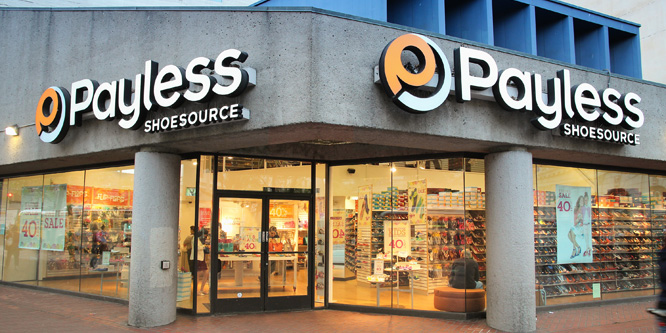Payless ShoeSource Inc. filed for voluntary Chapter 11 bankruptcy protection for the second time as it prepares to close all its North American stores by the end of May.
The filing arrived Monday night, a day after it began liquidation sales for its roughly 2,500 stores in North America. All stores will remain open until at least the end of March and the majority until May. The company has already ended online sales.
Reuters had reported last week that the company was planning to close its stores when it files for bankruptcy for the second time in two years.
Payless locations in about three dozen other countries, including 420 company-owned stores and 370 international franchiseed stores, will remain open.
“The challenges facing retailers today are well documented, and unfortunately Payless emerged from its prior reorganization ill-equipped to survive in today’s retail environment,” chief restructuring officer Stephen Marotta said in a statement. “The prior proceedings left the company with too much remaining debt, too large a store footprint, and a yet-to-be realized systems and corporate overhead structure consolidation.”
Much of its initial debt stemmed from the $2 billion sale of its former parent, Collective Brands, to Wolverine World Wide and private equity firms Blum and Golden Gate. Blum and Golden Gate acquired Payless, while Wolverine acquired Sperry Top-Sider, Saucony, Stride Rite and Keds.
In its initial filing in April 2017, Payless attributed the bankruptcy to “antiquated” inventory management systems and port strikes in the West Coast that delayed its shipments before the Easter holidays and led to a glut of inventories. The company closed nearly 400 doors and eliminated 400 million in debt to emerge by August 2017.
In the new filing in U.S. Bankruptcy Court for the Eastern District of Missouri, the 63-year old discount shoe retailer said major disruptions in the company’s supply chain hurt its 2017 holiday shopping season, and a computer system breakdown in summer 2018 impacted back-to-school sales.
Payless faced an “oversupply of inventory in the fall of 2018 leading into the winter of 2019” and was “forced to sell merchandise at steep markdowns, which depressed margins and drained liquidity,” according to a court filing. “Customers filled their closets with these deeply discounted products, which served to reduce customer demand for new product.”
The sell-offs at for below-market prices led to a loss of $66 million in 2018 compared to a loss of $11 million in 2017.
Cash restraints also prevented the chain from investing in an “omnichannel” experience that combined online and brick-and-mortar shopping. Unified shopping capabilities were only introduced to 200 doors, or 8 percent of its U.S. footprint.
The filing said Payless has about $470 million in outstanding debt. Several Chinese companies, including footwear suppliers, were listed among its largest unsecured creditors.
Image courtesy Payless










